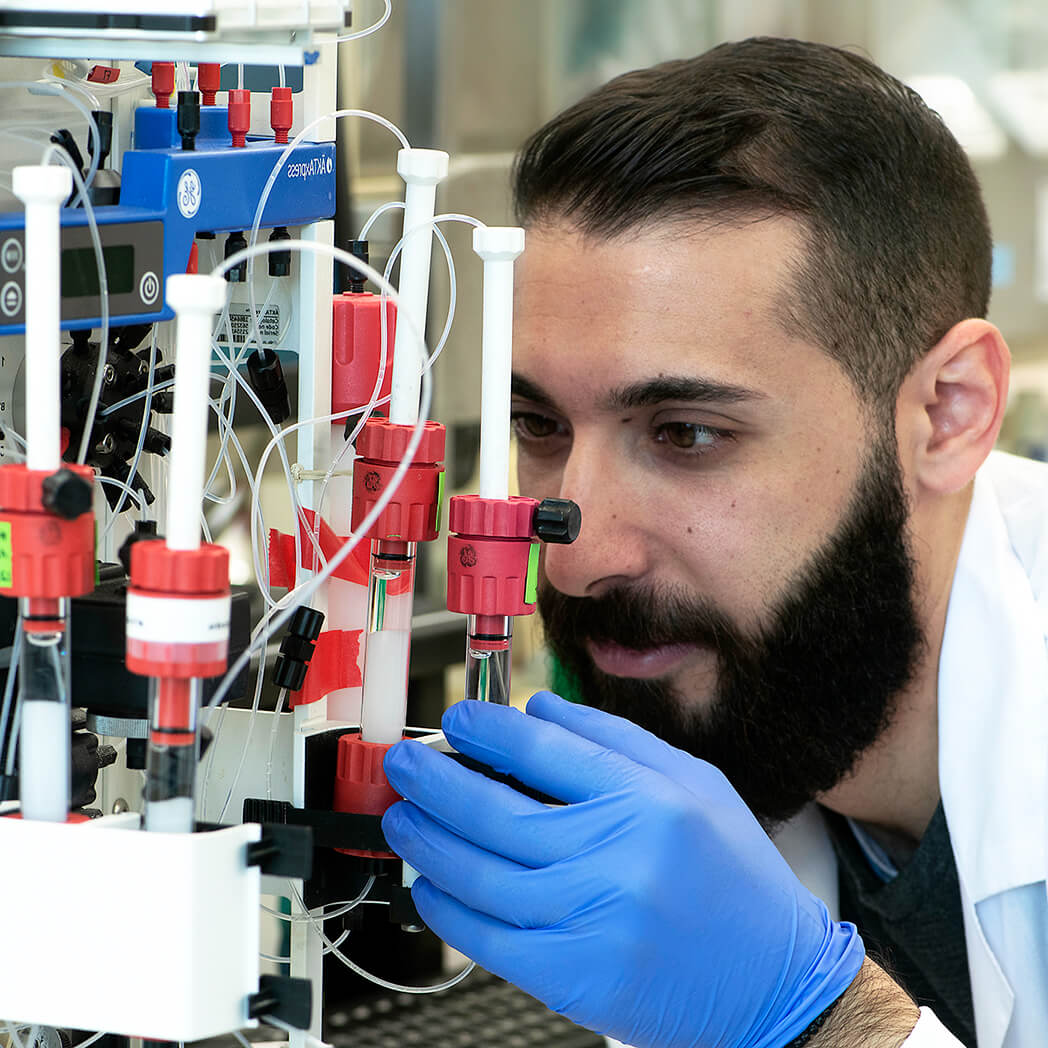Overview
Cat #:
STC-825
Purity: >98% (HPLC)
CAS No.: 115797-06-3
MW: 1354 Da
Form: Lyophilized
α-Conotoxin SI (#STC-825) is a highly pure, synthetic, and biologically active peptide toxin.
Alternative Name Alpha-conotoxin S1, SI
MW: 1354 Da
For research purposes only, not for human use
Applications
Our Bioassay
Our bioassay
 Alomone Labs α-Conotoxin SI inhibits muscle nicotinic ACh receptors expressed in Xenopus oocytes.A. Representative time course of α-Conotoxin SI (#STC-825) inhibition of α1/β1/γ/δ nAChR currents, elicited every 50 sec by transient application of 20 µM acetylcholine, while membrane potential was held at -80 mV, and reversibly inhibited by 0.2 µM and 1 µM α-Conotoxin SI (top horizontal bars). B. Superimposed traces of α1/β1/γ/δ nAChR currents upon application of control, 0.2 µM and 1 µM α-Conotoxin SI (taken from the recording in A).
Alomone Labs α-Conotoxin SI inhibits muscle nicotinic ACh receptors expressed in Xenopus oocytes.A. Representative time course of α-Conotoxin SI (#STC-825) inhibition of α1/β1/γ/δ nAChR currents, elicited every 50 sec by transient application of 20 µM acetylcholine, while membrane potential was held at -80 mV, and reversibly inhibited by 0.2 µM and 1 µM α-Conotoxin SI (top horizontal bars). B. Superimposed traces of α1/β1/γ/δ nAChR currents upon application of control, 0.2 µM and 1 µM α-Conotoxin SI (taken from the recording in A).
Citations
Citations
Specifications
Properties
Technical Specifications
Origin Synthetic peptide
MW 1354 Da
Sequence ICCNPACGPKYSC.
Modifications Disulfide bonds between Cys2- Cys7, Cys3- Cys13. Cys13 - C-terminal amidation.
Peptide Content 100%
Purity >98% (HPLC)
Molecular formula C55H84N16O16S4.
Form Lyophilized powder.
CAS No. 115797-06-3
Accession number P15471.
Biological Activity
Target Muscle nAChR
Effective concentration 200-1000 nM.
Activity α-Conotoxin SI inhibits muscle type α1/β1/δ/γ nicotinic acetylcholine receptors (nAChRs) at 200-1000 nM1 .
References
- Zafaralla, G.C. et al. (1988) Biochemistry 27, 7102.
Solubility and Storage
Shipping and storage Shipped at room temperature. Product as supplied can be stored intact at room temperature for several weeks. For longer periods, it should be stored at -20°C.
Solubility Any aqueous buffer. Centrifuge all product preparations before use (10000 x g for 5 min).
Storage of solutions Up to two weeks at 4°C or three months at -20°C.
Scientific Background
References
Scientific background
α-Conotoxin SI is a 13-amino acid residue peptide toxin originally isolated from Conus striatus venom. The toxin’s structure is stabilized by six hydrogen bonds and disulfides between cysteine residues 2 and 7 and 3 and 131. It is a potent and selective antagonist of α1/β1/δ/γ nicotinic acetylcholine receptors (nAChRs).
Nicotinic acetylcholine receptors are ionotropic multi-subunit, neurotransmitter-gated receptors of the cholinergic system. They are responsible for mediating the effects of the neurotransmitter acetylcholine (ACh). nAChRs are assembled from one or more α subunits (α1-α10) alone or together with one or more β subunits (β1–β4)2.
References
- Benie, A.J. et al. (2000) FEBS Lett. 476, 287.
- Lustig, L.R. (2006) Anat. Rec. A Discov. Mol. Cell. Evol. Biol. 288, 424.
Last Update: 08/01/2025

